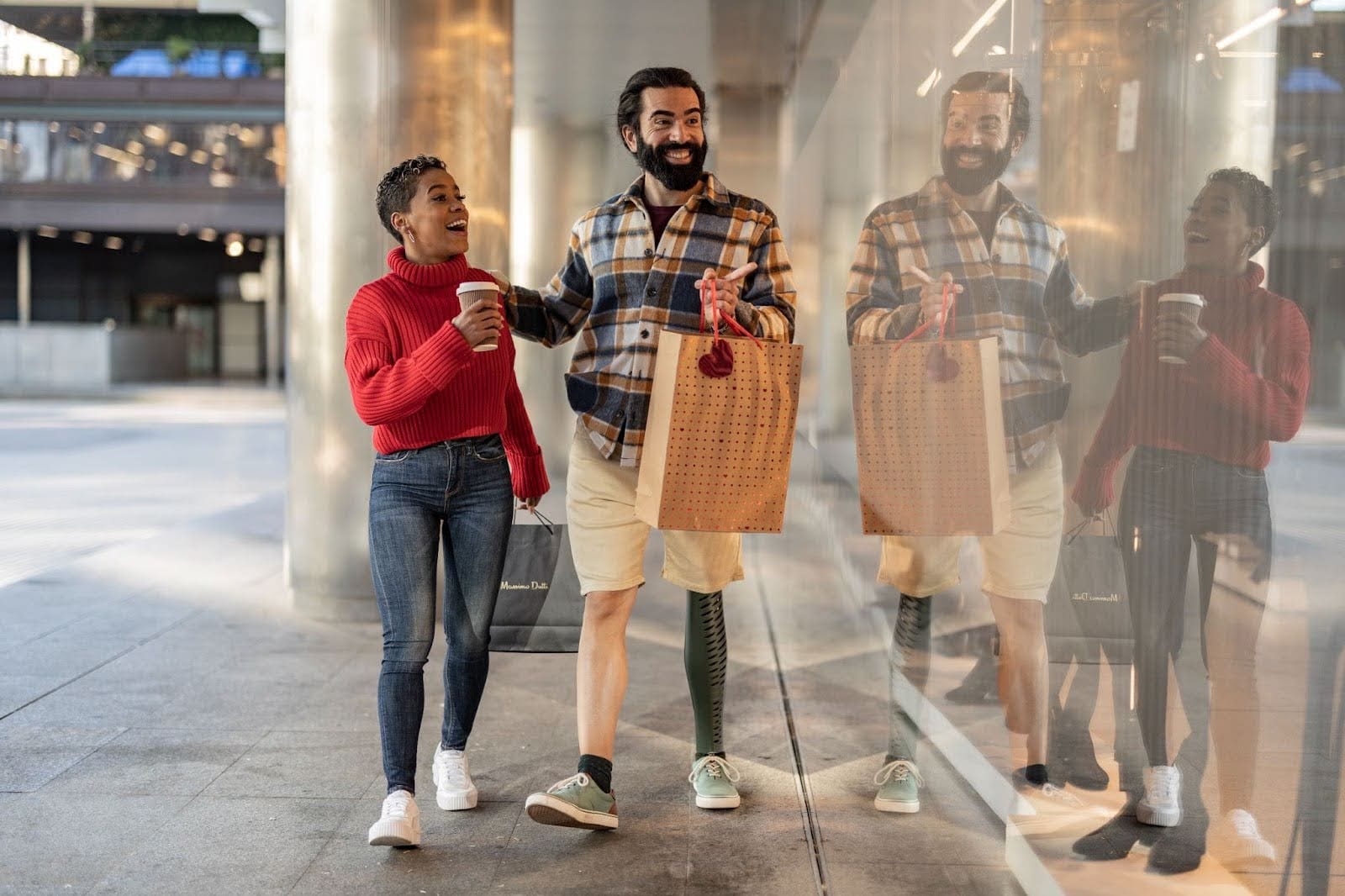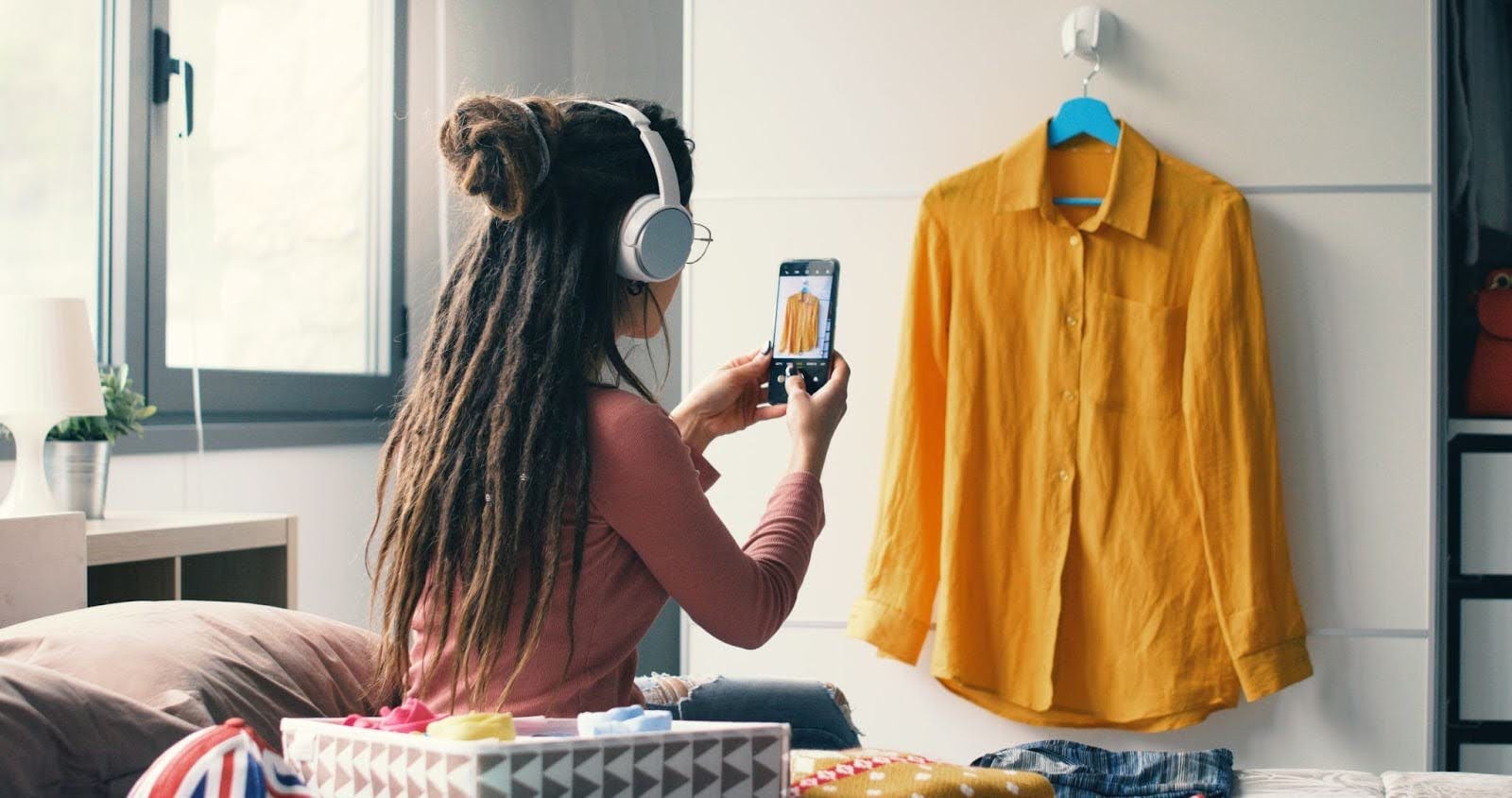The Role of AR in Creating Immersive Shopping Experiences
With technological developments, retail and e-commerce brands are constantly trying to stand out and engage with consumers in a meaningful way. Augmented Reality (AR) plays a crucial role in enabling the immersive experience and aids in boosting brand recall value in the real world. AR provides immersive virtual, realistic, and brief product demonstrations. It is renovating the whole shopping experience for consumers by making it convenient, customizable, and fun.

Augmented Reality in Retail
Augmented Reality (AR) in retail refers to the integration of digital elements into the real world to enhance the shopping experience. Through smartphones, tablets, or AR glasses, consumers can interact with virtual product overlays, try on items, or visualize how products will look in their space.
Feature | Benefit in Retail |
Virtual Try-Ons | Allows users to test products like clothes or makeup digitally. |
Product Visualization | Customers can see how items fit into their environment in real time. |
Interactive Engagement | Makes the shopping process more interactive and enjoyable. |
Example: IKEA’s Place app allows users to position furniture in their homes virtually, helping them make confident purchasing decisions.
AR Powered Shopping Experience
Augmented reality (AR) shopping is changing how people explore and buy products. With AR-powered shopping experiences, customers can virtually try on clothes, see furniture in their homes, or test makeup shades—all from their phones. This immersive AR experience bridges the gap between digital browsing and in-person shopping, offering the convenience of online retail with the interactivity of a physical store. Retailers are using AR to enhance their customer’s journey, making it easier to decide on purchases. From augmented reality shopping apps to in-store AR displays, these technologies bring products to life and make shopping more engaging than ever before.
Benefits of AR in Shopping Experiences
AR offers significant advantages for both retailers and customers, making it a win-win technology.
Benefits | Insight | Example |
Enhanced Customer Experience | AR allows customers to interact with products in ways that static images or videos cannot. For example, users can “try on” clothes or accessories virtually, making the shopping experience more personal and enjoyable | Lenskart’s AR feature lets users see how different glass frames look on their faces, reducing purchase hesitation. |
Improved Conversion Rates | By giving customers confidence in their choices, AR reduces the likelihood of cart abandonment and increases conversion rates | Sephora’s Virtual Artist lets customers try makeup virtually, boosting online sales and reducing returns |
Reduced Product Returns | Virtual try-on and 3D visualizations allow customers to make better-informed decisions, leading to fewer returns | A furniture retailer can minimize returns by showing customers how items fit in their space using AR. |
Enhanced Brand Recall | AR experiences are interactive and memorable, helping brands stand out in a crowded marketplace | Coca-Cola’s AR campaigns at vending machines made the brand’s messaging unforgettable for users |
Data Insights and Personalization | AR provides retailers with valuable data on customer behavior and preferences, enabling personalized recommendations | AR-powered apps track which products users engage with, allowing brands to tailor follow-up offers or promotions. |
Use Case of AR in eCommerce and Retail
AR can be used in various ways to create immersive shopping experiences:
Application | Use Case |
Virtual Try-Ons | Customers can try clothes, makeup, or accessories using their smartphone camera. |
3D Product Demos | Consumers can explore products from all angles in 3D before purchasing. |
In-Store AR Displays | Interactive kiosks in stores can provide additional product details or virtual fitting rooms. |
Personalized Recommendations | AR apps can suggest products based on user preferences and past behavior. |
Gamified Shopping | Brands can create AR-based games to engage shoppers, such as treasure hunts or challenges. |
Key Examples of AR-driven Shopping Experiences
Several brands have successfully integrated AR into their retail and e-commerce strategies. Here are some noteworthy examples:
IKEA Place
What It Does: Lets customers visualize furniture in their space through their smartphone camera.
Impact: Reduced returns and increased customer satisfaction by helping users make confident purchasing decisions.
Sephora Virtual Artist
What It Does: Enables users to try on makeup virtually using their phone camera.
Impact: Increased conversion rates and reduced the need for physical testers in stores.
Nike Fit
What It Does: Uses AR to measure foot size and suggest the best shoe fit for customers.
Impact: Reduced returns due to sizing issues and improved customer experience.
Gucci AR Sneakers
What It Does: Allows users to try on virtual sneakers through their phones.
Impact: Enhanced engagement with the younger, tech-savvy audience.
How to Plan a Product Launch with AR
Augmented Reality can elevate a product launch, making it more engaging and impactful. Here’s how to plan an AR-enhanced product launch:
Define Objectives
Determine the purpose of using AR in your launch. Is it to increase awareness, drive sales, or create buzz on social media?
Choose the Right AR Format
Options include virtual try-ons, interactive 3D product demos, or AR filters for social media.
Integrate AR Across Channels
Promote the AR experience on social media, your website, and in-store to reach a wider audience.
Test the Experience
Ensure the AR experience works seamlessly on various devices and platforms before the launch.
Example: Recent launches have included immersive AR experiences, allowing users to interact with the product digitally, creating a buzz and driving higher engagement.
Future Trends in AR Shopping Technology
As AR technology continues to evolve, several trends are set to shape the future of shopping

AR Wearables
AR glasses and wearables will provide hands-free shopping experiences, making interactions even more seamless.
AI-Powered Personalization
Combining AR with AI will enable highly tailored shopping experiences based on individual preferences.
WebAR
Web-based AR eliminates the need for app downloads, making AR more accessible for users and scalable for brands.
AR in Live Shopping
Live-streaming platforms may integrate AR to allow viewers to try products virtually while watching.
FAQs
How does AR improve online shopping?
AR enhances online shopping by allowing users to visualize and interact with products in real time, increasing confidence and reducing returns.
What industries benefit the most from AR shopping?
Retail, fashion, beauty, furniture, automotive, and many more industries benefit significantly, as AR helps visualize and interact with products effectively.
What is WebAR, and how is it different from app-based AR?
WebAR allows users to experience AR directly through their browser without downloading an app, making it more accessible.
How can small businesses use AR in their campaigns?
AR can be utilized by small businesses to create interactive experiences for customers either through social media or visuals to increase the brand engagement and product experience.
Final Thoughts
Augmented reality is making big impacts on shopping as it creates immersive, personalized and interactive experiences.From virtual try-ons to 3D product models, AR offers practical solutions that enhance consumer engagement and drive sales. For marketing managers and business leaders, AR is no longer just a difference, it's an essential tool for staying competitive in today’s digital-first world. By incorporating AR into your retail and eCommerce strategies, you can provide customers with a shopping experience that’s not only convenient but also memorable. As AR technology continues to evolve, the opportunities for innovation are endless, making now the perfect time to embrace this transformative tool.
Comments
Your comment has been submitted successfully!